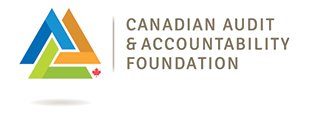Back To The Future: Tips for Planning and Writing Prospective Audit Reports
IntroductionHave you ever found yourself conducting a performance audit and starting to feel that “this agency should be doing more to prepare for the future,” but you could not point to any obvious legal or other requirements to prove why the audited agency should be doing more? You were probably working on a prospective—meaning future-focused—audit. Even seasoned auditors may benefit from practices for planning and writing prospective reports convincingly because of the following:
Performance auditors have been writing prospective audit reports for decades, but the demand for them is likely to increase. In 1990, the U.S. Government Accountability Office (GAO) issued guidance for answering prospective questions. By then, the GAO was increasingly being asked to answer these questions, such as the potential impacts of proposed legislation. Factors likely to increase demand for prospective reports in the United States include the following:
Benefits of prospective audit reportsProspective audit reports offer key benefits. For example, they can:
|
About the Author:
Jessica Bryant-Bertail is a Senior Analyst in the U.S. Government Accountability Office’s (GAO) Physical Infrastructure team, based in the Seattle field office. Since joining the GAO in 2008, she has worked on a variety of performance audits, mostly focused on aviation and surface transportation issues. She has led several GAO audits as Analyst-in-Charge, including on vehicle cybersecurity and on partnerships between local transit agencies and private transportation companies. She is currently leading an audit of the U.S. Federal Aviation Administration’s designated unmanned aircraft systems test sites. She studied at the University of Washington, Seattle, where she earned a Bachelor’s degree in International Studies in 2000, and dual Masters’ degrees in Public Administration and in Russian, East European, and Central Asian Studies in 2008. Contact the author at: |
|||||||||||||
Selected practices for planning and writing prospective reportsThis article aims to share tips for planning and writing prospective reports convincingly, based on my experience at the GAO over the past decade. This is a selection, not an exhaustive list, of practices for managing audits that could be useful for prospective reports. To illustrate the application of the selected practices, examples are drawn from two recent GAO reports, both about the evolving transportation sector:
Practice 1: Consider including a prospective research questionWhen uncertainties about the future significantly affect your audit, consider including a prospective research question. This can provide a designated report section for discussing key uncertainties. For example, the Public Transit Partnerships team began its audit with a research question about the key challenges local transit agencies face in fostering partnerships with private mobility companies. In our stakeholder interviews, however, many selected local transit agencies and their partners told us that most challenges related to future uncertainties. Using a prospective research question, we dedicated one report section to discussing trends that could impact the future of such partnerships, such as the projected rollout of shared self-driving vehicles. Practice 2: If other criteria are elusive, use recognized internal control standardsWith prospective reports, it can be harder to identify the right criteria for assessing the audited agency’s efforts, since there are multiple ways that the agency could respond to the evolving issue. Often, we are looking to make a recommendation to help the agency better plan for an uncertain future, which can require combining multiple relevant criteria. In cases where criteria are elusive, the GAO’s Standards for Internal Control in the Federal Government can be helpful (they are largely based on the COSO internal control framework, which is sometimes used by Canadian auditors for the same purpose). These standards or principles are requirements for U.S. federal agencies, but have also been adopted as best practices by state, local, and other entities. Four principles especially relevant for prospective reports include that entity management should:
Practice 3: Combine the chosen internal controls with the audited agency’s goals to strengthen the audit criteriaAudited agencies often have goals related to being prepared for the future, such as in strategic plans. Combining such goals with the chosen internal controls can strengthen the audit criteria. To illustrate, tables 1 and 2 outline the criteria, relevant excerpts of findings, and related recommendations from the Public Transit Partnerships and Vehicle Cybersecurity reports. Both reports combined agency goals and internal controls to form a stronger set of audit criteria. Table 1 – Selected Criteria Used for the Public Transit Partnerships Report
Table 2 – Selected Criteria Used for the Vehicle Cybersecurity Report
|
||||||||||||||
The Level is:



